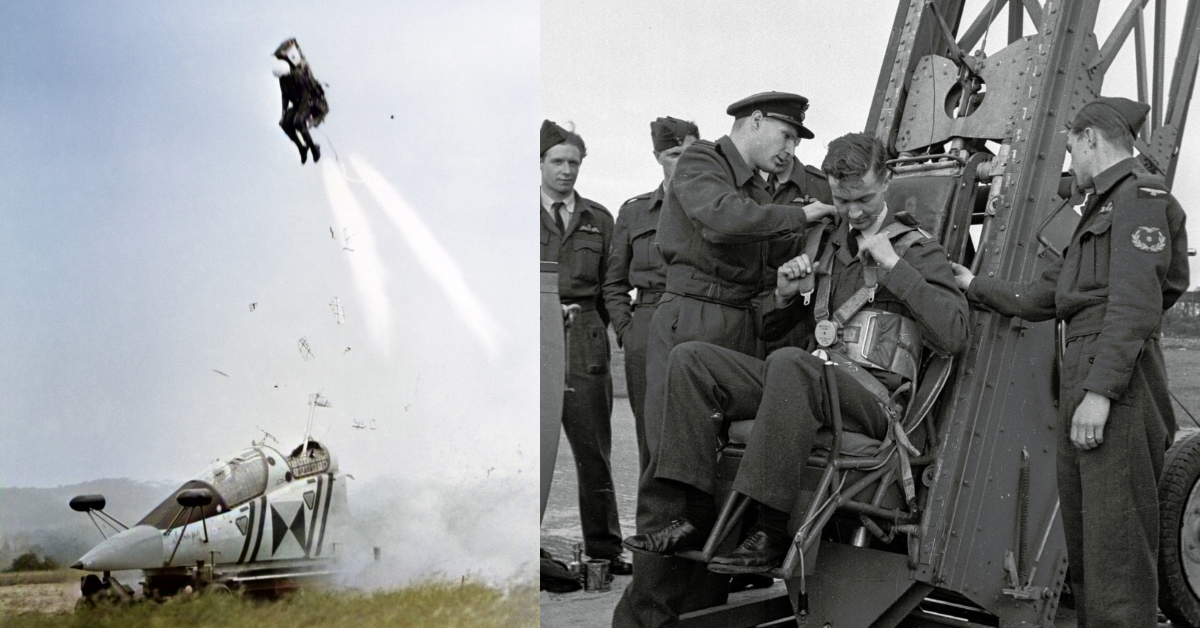The invention of the ejection seat is one of the biggest milestones for aviation safety in the history of flight. Before ejection seats, exiting an aircraft in an emergency was a hazardous ordeal, requiring crew members to literally leap free of their doomed machine. Factors like injuries, g forces, or being trapped meant successfully escaping from an inoperative aircraft was difficult. One of the pioneers in designing ejection seats was James Martin, who today has been estimated to have saved over 7,500 lives.
Ejection seats
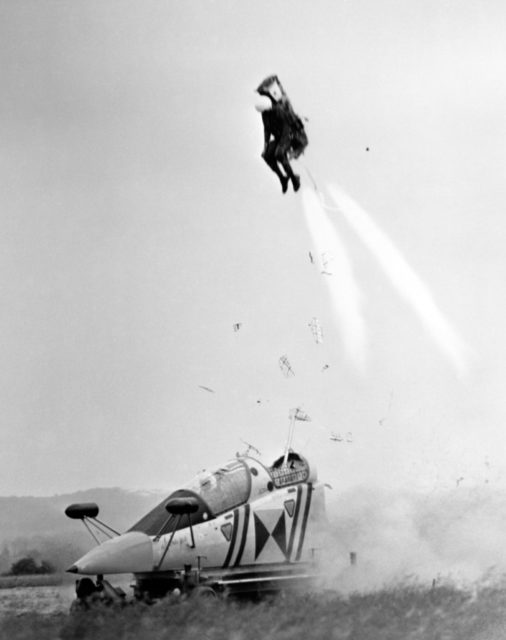
Simply put, an ejection seat is a system designed to remove a person from an aircraft in an emergency. One of the main aims is to launch the person clear of the aircraft itself to avoid collisions.
How this is achieved varies between designs, but most systems launch a crew member’s seat out of an aircraft with explosives or a rocket motor. A less common approach is to launch one or even multiple crew members out in a self-contained escape capsule. These are suited for aircraft that operate at extreme speeds or altitudes, where a conventional ejection seat would leave the crew exposed to the harsh conditions outside.
Once free from the aircraft, a parachute is usually deployed.
Before ejection seats were standardized, the process of bailing from an incapacitated aircraft was extremely dangerous. It was easy to get equipment snagged while climbing out, or impact a part of the aircraft after leaping free. Additionally, if a pilot was under high g forces or was too injured they may be unable to pull themselves out. At low altitudes, pilots often did not have enough time to bail out before their aircraft hit the ground.
The basic idea of a system that can remove a pilot from an aircraft had been around for almost as long as the aircraft itself. The concept greatly matured during WWII, but it was James Martin’s contributions to aircraft safety systems that would truly cement the ejection seat as a staple of aircraft design.
James Martin
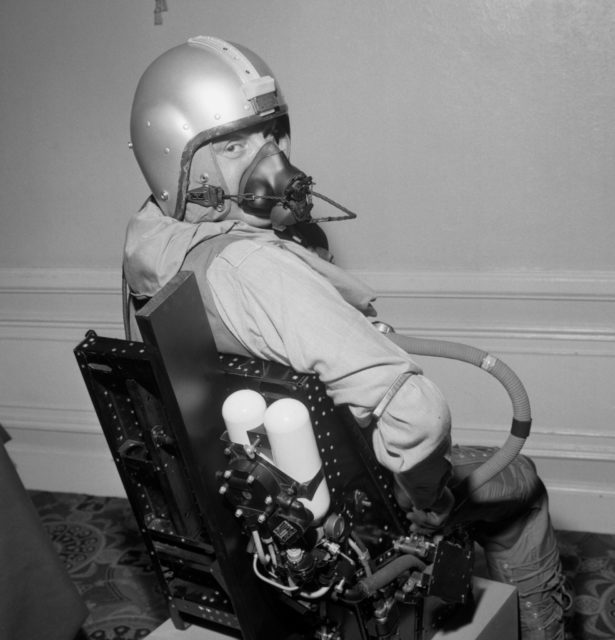
Martin was born in Crossgar, County Down in Ireland on 11 September 1893. An engineer, he established the Martin-Baker aircraft manufacturing company with friend and pilot Valentine Baker, in 1934. Baker was an experienced pilot and would become the test pilot for the pair’s creations.
During a test flight for their third aircraft design, the Martin-Baker MB 3, the engine seized, forcing Baker to bring it back down to land. During the emergency landing, the MB 3 collided with a tree, killing Baker.
The death of Martin’s friend deeply affected him. He was so troubled by Baker’s death that he reorganized the company to focus purely on aircraft safety systems.
His first foray into ejection seats began in the 1930s, making him one of the earliest pioneers of the device. During WWII his investigations concluded that the best method of powering the seat was via explosives. Others at the time were experimenting with springs and compressed air.
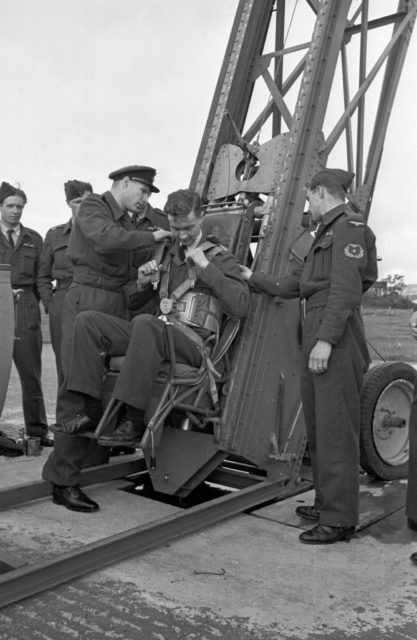
One of the biggest hurdles in the development of the ejection seat was determining the number of g forces the human body could safely handle while traveling straight up. A Martin-Baker employee, Bernard Lynch, participated in repeated tests of increasing speed until he felt a high amount of discomfort.
On 24 July 1946 Lynch performed the company’s first live test out of an aircraft, a Gloster Meteor, at 320 mph and 8,000 ft. The test was a success.
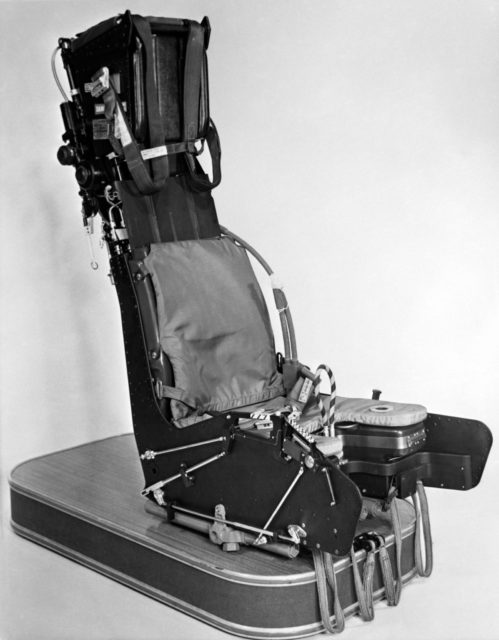
Although other ejection seats were developed or in development by other nations before Martin’s, as he designed his, which set the standard for the modern ejection seat, without knowing about the others, the invention of the device is often attributed to him.
Since then, Martin-Baker ejection seats, and ejection seats in general, became more popular until they were found in almost every military aircraft possible. Improvements and changes have been made over the years, including adding the ability to eject from a stationary aircraft on the ground.
More From Us: C-47 The Plane & The Invention That Helped D-Day Happen
Martin-Baker estimate that their systems have saved over 7,500 lives. People who have ejected from their aircraft in a Martin-Baker ejection seat are welcomed into the company’s “Ejection Tie Club” and are given a lapel pin and tie.
Martin passed away in 1981 but was awarded two honorary doctorates, an OBE, and a Knighthood. The Martin-Baker company is still one of the world’s leading manufacturers of ejection seats and is now run by Martin’s two sons.
